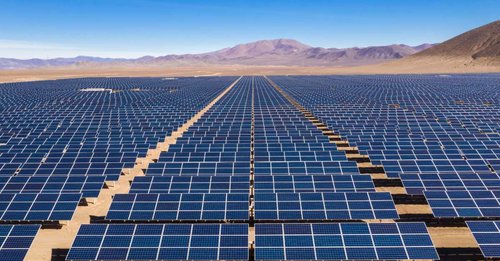Stopping The Cause Of Climate Change
Thursday, 15 September 2022By Shann Turnbull
Simplifying money can stop the cause of climate change by removing market failure.

The World Bank, IMF and governments have been complicit in failing to issue simplified money. Simplified money introduces a stable monetary tether to allow decentralised banking. Such money was privately issued during the Great Depression, and as a result simplified money became a financial lifeboat when official currencies failed. In other words money creation became democratised.
Former World Bank Chief Economist, Lord Stern, advised the UK government in 2006 that climate change has been caused by “the biggest market failure the world has ever seen”. Market failure continues because modern money can no longer be defined by any real goods or services. It has become intrinsically unstable- much like like cryptocurrencies.
Self-referential markets, turn economic value into a toxic, dysfunctional belief system which is disconnected from the harms it creates. These harms include inequality, instability and environmental damage. Carbon taxing or trading cannot remove the cause of market failure, as on their own they possess only limited ability to provide compensation.
When money had a tether in advanced economies in the last century, the cost of the financial system was less than 5% of GDP. Today, untethered money has inflated this cost to more than 20% of GDP. This is twice the cost that many OECD countries spend on welfare and social security. Introducing negative interest rate money significantly reduces costs and ameliorates the effects of market failure arising from burning carbon.
The inflation of untethered, complicated money is now feeding inflation. Simplified money significantly reduces costs for lower income citizens who need money to buy a home. It also creates a stable predictable unit of value to promote trade and investment.
Because the simplified terminating currencies that were issued privately in the Great Depression were tethered, they did not possess the complications of being a unit of account. Neither did they possess the complication of being a store of value. This latter feature arose because they had a negative interest rate that paid the cost of terminating the money issued. Simplified money could only be used as a medium of exchange as described by Keynes in 1923.
Tethers were considered, then ignored by Bank Governors

Mark Carney, the Governor of the Bank of England in 2019 raised the idea of a “synthetic” tether to “support better global outcomes”. However, when the Bank invited the public in March 2020 to make submissions on whether the Bank should issue a Central Bank Digital Currency (CBDC), their discussion paper did not mention a tether. My submission to the Bank pointed out that without a tether “a CBDC becomes flawed”. However, their follow-up discussion paper in June 2021 again neglected to raise the issue of a tether.
King had identified the need for a tether when he was Deputy Governor of the Bank of England. In 1999 King asked the question: “Will Central Banks exist at all?” He explained how technology could remove the need for Central Banks to exist with tethered money. King’s analysis led him to state: “The successors to Bill Gates would have put the successors to Alan Greenspan out of business”.
This reveals that Central Banks possess an existential conflict of self-interest in considering a tether. It raised the question of “how should Central Bank conflicts be managed?” It explains why governments are complicit in maintaining their fiat powers over toxic currencies. It also explains why political defenders of Central Banks like US Congressman Steagall rushed through legislation with an emergency meeting of both houses of Congress on March 9, 1934.
Only seventeen days earlier under President Hoover, Senator Bankhead, and Congressman Pettengill introduced a Bill into Congress for the Government, not the Fed, to issue one billion dollars of simplified terminating money. This would have put the Federal Reserve Bank (Fed) out of business.
Steagall had already saved the Fed from extinction in 1932 by introducing legislation to allow it to use government debt, rather gold as a Reserve. This later allowed President Nixon in 1971 to remove gold as tether for US dollars and so also for most other currencies.
The Bankhead Pettengill Bill became delayed from the Inauguration on March 4, 1934, of the newly elected President Roosevelt. With most banks failing Roosevelt declared a bank holiday. Steagall did not have time to print a Bill to replace the one already published seventeen days earlier. To save the Fed again he had to read out aloud his Bill. The President signed it into law the same day. As a result, complicated money was preserved to infect the World with the market failure that is poisoning our environment.
Simple sustainable energy tethers

Simplified money tethered to bioregional Sustainability Indexes (SIs) could not only eliminate market failure but introduce compelling markets forces between bioregions to sustain humanity for eternity. A simple objective SI can be created from the ratio of benign renewable energy produced in each bioregion as a percentage of total energy consumed in the region.
Some Australian regions like Tasmania would obtain an SI of over 99% because they rely on this percentage of renewable energy. The indexes for most other regions of the world are smaller to make the exchange value of their currency smaller. Compelling market forces are then created between bioregions to improve their SI and so the long-term wellbeing of their citizens.
Economic value becomes depended by how well each bioregion can establish a circular economy. Unlike carbon taxing and trading, a SI creates an imperative to keep bioregional populations to sustainable limits. Migration could be expected towards bioregions that could best sustain human wellbeing. Unlike the concept of economic value, wellbeing is crucial to sustain life. Without life, the existing social construct of economic value is not required.
This is illustrated by natural systems like our bodies or other living things. Economic value is not required for living things to become self-regulating, self-repairing, self-reproducing and self-governing. This explains why Indigenous Australian languages possess no words for concepts like “economic value”, “price”, “cost,” or “ownership”. These words are not relevant to sustainability. Elinor Ostrom explained in her 2009 Nobel prize acceptance speech how complex economic problems can be resolved, without “markets and States” as illustrated by Indigenous Australians.
Eliminating cause of climate change by legal action?
The urgent need to eliminate the cause of climate change was not recognised in terms of reference reviewing the Reserve Bank of Australia, announced in July this year. There was no consideration of “market failure”, “crypto currencies” or “technology”.
It is not too late for the Australian Government to extend its review to consider how simplified money could affect the well-being of humanity and our planet. Australia could lead the world in demonstrating how to overcome the existential conflicts of interest of central banks and their advisers. A complementary approach would be for the government to authorise experiments creating and testing simplified sustainable money in a “regulatory sandpit”.
If governments fail to act, they may find themselves and/or their Central Bank being sued for negligence. This has already occurred when environmental standards have not been achieved!